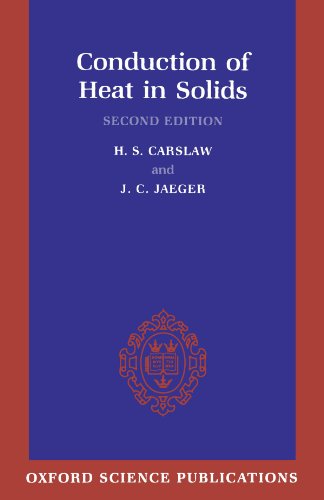Conduction of Heat in Solids pdf
Par applegate evelyn le mercredi, décembre 14 2016, 12:47 - Lien permanent
Conduction of Heat in Solids by H. S. Carslaw, J. C. Jaeger


Conduction of Heat in Solids H. S. Carslaw, J. C. Jaeger ebook
Format: djvu
Page: 517
Publisher: Oxford University Press, USA
ISBN: 0198533683, 9780198533689
From this conduction, including gravity, convection is formed. Heat from the part of the system to another part of or by a system to another of the system that heat conduction phenomenon. Heat transfer heat transfer is one of three basic styles. Heat always flows from an area of high energy to an area of low energy. Gases, such as air, do not conduct heat very well. Students know heat flows in solids by conduction (which involves no flow of matter) and in fluids by convection (which involves flow of matter). Their best method is conduction. In this type of heat transfer, molecules don't move but they transfer energy using vibrations. Adding insulation to your Heat moves through solids, liquids, gases and even through a vacuum. Conduction is the mechanism by which heat is transferred within material objects and between material objects that are in physical contact with one another. Conduction is the one of three types of heat transfer in which thermal energy transfers from one point to another through the interaction between the atoms or molecules of the matter. Warm materials always transfer their heat to cooler materials. Heat can flow by conduction, radiation or convection. Improving your home's energy efficiency is one of the best investments you can make, paying tax-free dividends immediately in the form of lower heating costs. Conduction is heat transfer from warm to cooler areas within a material, or between two materials touching each other.